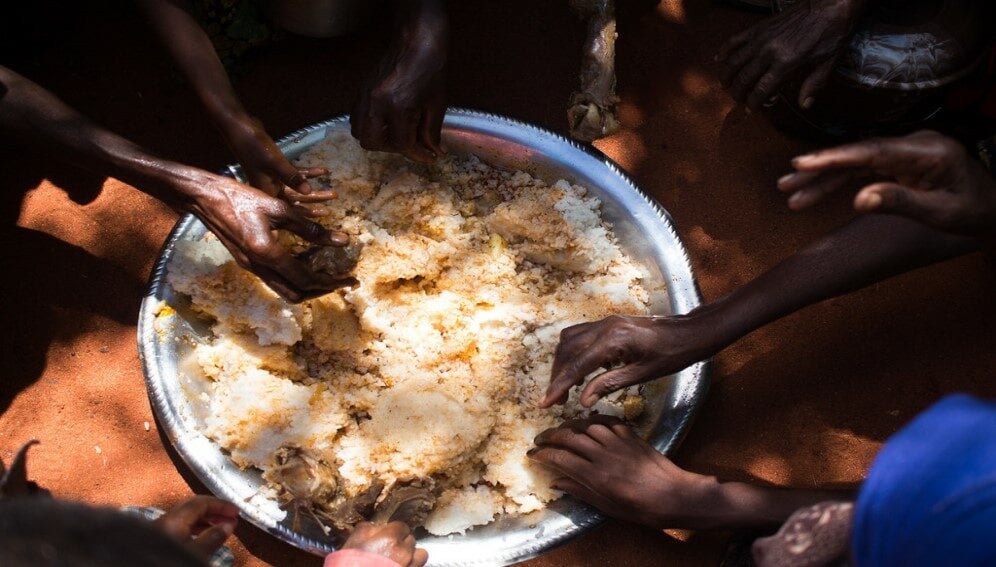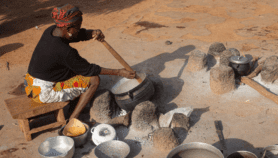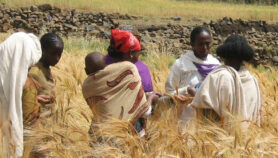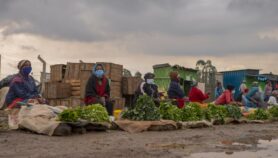04/05/21
Dietary tool aims to cut disease, climate change risks

By: Syriacus Buguzi
Send to a friend
The details you provide on this page will not be used to send unsolicited email, and will not be sold to a 3rd party. See privacy policy.
Researchers have created a new dietary tool that they say could be used to simultaneously cut the risk of disease and climate change impacts.
The tool, unveiled in a report last month, has been applied in regions across the world including Sub-Saharan Africa, South Asia and Latin America, taking into account cultural differences in the consumption of food.
“If humanity is to reset food systems from farm to fork, we must consider health and the environment side by side.”
Marta Antonelli, Barilla Foundation
Unhealthy food choices affect people’s health and well-being, leading to 9.1 million premature deaths globally every year from heart-related diseases, according to the report compiled by Italy-based researchers who created the tool.
“If humanity is to reset food systems from farm to fork, we must consider health and the environment side by side,” says Marta Antonelli, a co-author of the report, and the head of research at Italy-based Barilla Foundation. “Many existing dietary tools or guidelines attempt to offer a universal diet that may not be achievable or appropriate to all regions.”
Diet-related costs resulting from deaths and non-communicable diseases are projected to exceed US$1.3 trillion per year by 2030, according to a 2020 report by the Global Panel on Agriculture and Food Systems for Nutrition.



The Barilla report reveals how whole grains indigenous to Africa such as millet can promote African diets amid climate change through their ability to withstand droughts and semi-arid conditions.
The report offers ten recommendations for achieving healthier, sustainable diets, including the development of standards, integrated urban food policies and the re-direction of agricultural subsidies towards nutritious and sustainable food.
Researchers designed the tool called Double Health and Climate Pyramid by clustering the world’s most common foods into 18 groups of items that have similar nutritional features and impact on health to form a “health pyramid”. They also formed a “climate pyramid” by calculating the average carbon footprint of each food group, relying on a database created by the European Union-funded project Su-Eatable Life.
Antonelli tells SciDev.Net that the tool was created because existing food systems are currently failing to provide adequate and equitable food for all, posing a burden on ecosystems and natural resources.
But the recommendations do not require consumers to give up red meat, dairy or even cakes and pastries.
Antonelli says that unlike existing approaches, the new tool considers all eating occasions including snacks, street food or lunches, by giving a daily and weekly perspective on frequencies of food consumption.
In Africa, the tool is still at an “experimental” stage, she added. Known there as the African Double Pyramid, it mainly covers the Democratic Republic of Congo, Ethiopia, Nigeria, South Africa and Tanzania.
“These countries have been selected for population size and geographic distribution. Starting with these countries, the model is applicable to the whole African region,” she explains, adding that the pyramid is a tool for educational purposes, and for inspiring communication and information campaigns on healthy eating and the environment.
Elizabeth Ndaba, a nutritionist at Tanzania’s Ministry of Health, says the tool is a good source of information on nutrition for consumers.
“Previous tools took into account portioning of different food groups; that is carbohydrates vis-à-vis proteins but did not specify portioning within groups like complex carbohydrates vis-à-vis simple carbohydrates [as shown by the new tool],” Ndaba tells SciDev.Net. “[This] left consumers confused and frustrated as they could not get intended outcome even after using the tools properly because of lack of uniformity in the message conveyed by health educators.”
But Ndaba believes it should have gone further to address the major factors contributing to non-communicable diseases. “It is silent about other modifiable risk factors such as physical inactivity, tobacco use and alcohol intake. This might reduce its effectiveness in cutting down disease risk and impact of climate change,’’ she adds.
This piece was produced by SciDev.Net’s Sub-Saharan Africa English desk.
References
A one health approach to food, the Double Pyramid connecting food culture, health and climate (Barilla Foundation & University of Naples Federico II, April 2021).
















